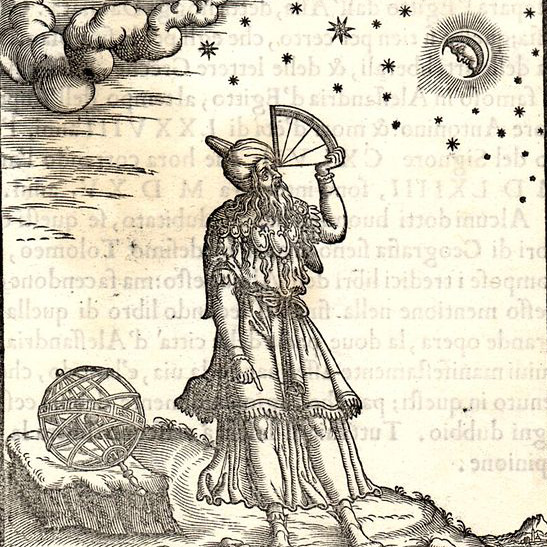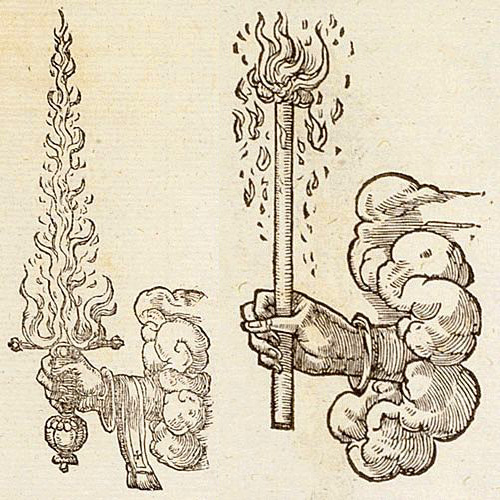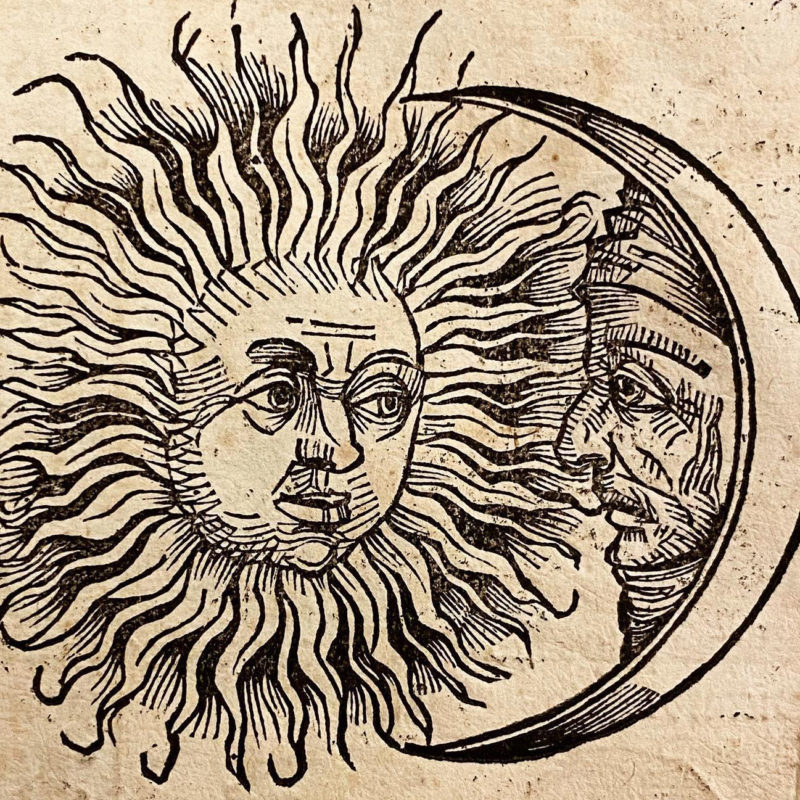The Fundamentals of Astrology (FOA) is Austin Coppock's comprehensive 3-year program designed to help the practitioner develop from novice to full astrological adulthood. It teaches natal and electional astrology, as well as remediation and astrological magic.
The class does not specialize in the method of one historical period of astrology or school of practice. Hellenistic, Medieval, Renaissance, and Modern approaches and texts all inform the class material, with a focus on the common ground of the tradition.
Curriculum
Year I is a thorough introduction to the technical, philosophical, and practical foundations of astrology. The focus is on natal astrology, but by the end of the course, the student should be firmly equipped to further explore other branches. Year I is a self-paced program, with a bi-weekly live support session. Limited enrollment opens once per quarter. You can sign up to be notified of open enrollment at the bottom of this page.
FOA Year I leads into the FOA Year II curriculum, which covers timing techniques, remediation, electional astrology, and astrological magic. Year II classes begin every April, and require graduation from Year I.
FOA Year III builds upon and further expands the wide landscape of theory and practice explored in the previous 2. In addition to lecture, discussion, and practice, Year III also leans significantly on key primary texts from across the tradition. These begin every April, and require graduation from Year II.
Structure and Platform
The class is built on an easy-to-use private social network and dedicated learning platform, Mighty Networks. After enrolling, students have permanent access to an earnest learning community, class materials, and a class-specific forum.
All 3-years of the program feature recorded lessons and lectures supplemented by weekly live sessions with Austin and/or select graduates of the FOA program. All live sessions are recorded and later made permanently available.
Year I is self-paced, but subsequent years require a minimum of 4-6 hours/week of study, practice, and class attendance.
Year I Syllabus
Semester A
Planets
The living, mobile core of astrology. Everything else in astrology depends on knowledge and understanding of the planets. Traditional planets, modern planets, the lunar nodes, and planetary days are covered here, as well as variety of crucial technical distinctions.
The Zodiac
The fundamental grid by which we understand the terrain of the sky through which the planets move. Topics include, image, polarity, modality, triplicity, and rulership.
Houses
It is only through the houses that we can fully locate what part of the life a given astrological influence lands. Angularity, dark houses, and other relevant distinctions and definitions are dealt with here.
Aspects
The language of relationship between the planets. The 5 traditional aspects are covered in depth here, as well as aspect patterns, and the many ways planets reinforce, support, oppose, fight, and take care of one another.
Semester B
Rulership and Dignity
A common stumbling block for students, this unit is centered on understanding how the planets deal with the variety of circumstances they find themselves in. The niceties of both essential and accidental dignity are understood using both traditional and modern models.
Fixed Stars
Beyond the orbits of the planets and yet part of our world is the luminous sphere of the Fixed Stars. This module provides a coherent paradigm for interpreting the fixed stars, and offers a guided tour of over a dozen of the most intriguing and powerful ones.
Light and Motion
The planets’ brightness, speed, and motion are, from our vantage on Earth, quite inconstant. This module deals with the meaning of the variety of related technical distinctions, such as retrogradation, combustion, cazimi, morning and evening rising, and more.
Synthesis
With so many technical distinctions and mobile components, it is crucial to practice seeing the chart move as a whole. This unit focuses on how to combine different techniques to come to accurate and meaningful conclusions about a given chart.
Year II Syllabus
Semester A
Annual Profections, Transits, and Zodiacal Releasing
The first Semester focuses on Timing Techniques, with units on Annual Profections, Transits, and Zodiacal Releasing.
Proficiency in this trio of techniques enables the astrologer to ascertain what portions of the natal chart are activated, map the native’s trajectory through a given time, and develop a nuanced view of the changing blend of obstacles and opportunities.
The Timing Techniques taught in this portion of the class address short, medium, and long-term timing concerns so that the student can match the technique to the scale of the inquiry.
The focus is not just on the individual techniques, but using them in concert to generate a coherent picture of what is going on.
Semester B
Remediation, Relationship, and Empowerment
The first unit in Semester B focuses on methods for working through chart difficulties, getting the most of natural strengths, and designing optimal strategies for different life periods.
Electional Astrology
Next is Electional Astrology, the art of picking the best times to initiate endeavors great and small.While we cannot choose our moment of birth, we can choose when to act.
Introduction to Astrological Magic
Here delve into the pro-active work of astrological magic, the art and science of ritually connecting with and directing the potency of the stars and planets. This class entails an overview of different types of operations, such as planetary prayers, petitions, and the like, as well as their electional requirements.
Advanced Astrological Magic: Talismans
The final month of the class focuses on the most difficult and potent part of astrological magic — the timing, construction, and consecration of effective talismans.
Year III Syllabus
Semester A
An Array of Refinements
The curriculum begins with a variety of technical refinements to sect, aspect, and house doctrines, as well as an investigation of and reflection upon what it means to be an astrologer.
Planetary Combinations
The topic of the second module is the unique fruit that planets yield when paired together. All of the classical combinations will be studied with the aid of traditional texts, primarily Firmicus Maternus' Mathesis. Further attention will be shown to the combination of house rulers, and the uniquely fortunate and unfortunate results thereof.
Complex Chart Combinations
The third module adds additional depth to planetary combinations through a perusal of the Hellenistic texts which contain a great number of precisely defined chart combinations. These will be studied in their own light, but also compared with the largely parallel study of chart combinations, "yogas," in Vedic astrology.
The Study of Lots
The fourth and final module of Semester A concerns the calculation and use of the Lots. The Lots provide additional detail about many core life concerns, such as parents, children, love, sickness, and wealth. Abu Mashar's Great Introduction will serve as our textual guide during this exploration of the Lots.
Semester B
The Method of Ficino
The second module of Semester B brings us back to the adaptive practice of astrological remediation. To this end we will make extensive use of Marsilio Ficino's classic Renaissance work, The Three Books on Life.
Specific Electional Parameters
The art of electional astrology is our topic in the third module. The general principles having been carefully introduced in Year II, this Year III unit focuses on the special requirements of each kind of election. Though a surgery, a home sale, and an exorcism may all be worth electing, they beg for different skies. Dorotheus' Camen Astrologicum will be our primary guide to these differences.
Selections from the Picatrix
The final module of Year III brings us back to the marvelous intersection of magic and astrology. Our text will be none other than the Picatrix, the single most important extant text of astrological magic.
Be Notified of Open Enrollment
Note that class sizes are capped to ensure every student gets enough personal attention.
Slots are offered on a first come, first served basis, and are usually filled within a day of opening.
Want to get started right away?
* The following classes are recordings ONLY, with no live or forum support. They are immediate downloads. *


















